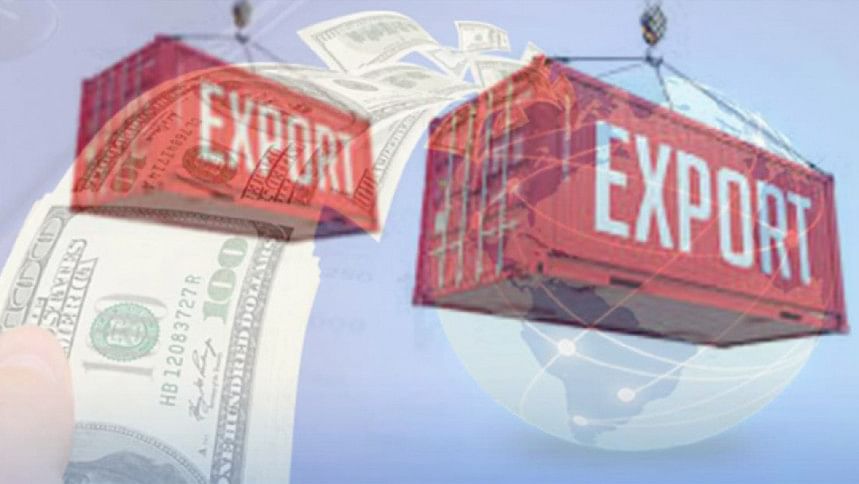Exporters confident of beating target if home ground is steady

Bangladesh wants to increase exports by about 17 percent this fiscal year compared with what it earned a year ago. At first glance, the $63.5 billion target looks quite ambitious.
Yet instead of worrying about foreign demand or competition abroad, exporters say the real test lies at home.
Business leaders say the goal is achievable if banks release letters of credit smoothly, factories receive uninterrupted gas and electricity, and customs officials speed up clearance of goods.
Their plea was so urgent that the government, immediately after announcing the target, called a joint meeting with stakeholders.
The meeting with exporters from 22 sectors alongside energy and banking officials is scheduled to take place this week, according to commerce secretary Mahbubur Rahman.
Of the $63.5 billion export target, $55 billion is projected from goods exports, 13.4 percent higher than last year, while $8.5 billion is expected from services, up 18.7 percent.
The recent change in US tariff policy has given Bangladesh an advantage, especially in garments. With an average tariff of 36.5 percent, lower than those faced by rivals, the US market offers a rare opening.
However, AK Azad, chairman of Ha-Meem Group, one of the largest RMG exporters to the US, said the benefits come with complications.
"Yes, we have a window of opportunity, but we are also facing price pressure. Buyers are negotiating harder and offering to share the tariff burden," said Azad.
Meanwhile, other top exporters warned against relying too much on one market.
"We have been disappointed before by sudden changes in rules. Even a new government could take away the tariff benefits in an instant," said an exporter from Chattogram who asked not to be named.
Despite these external advantages, exporters insist that domestic problems remain the greatest threat.
Mohammad Hatem, president of the Bangladesh Knitwear Manufacturers and Exporters Association (BKMEA), said, "There is demand in the global market. We are competitive. But how can we meet increased orders when gas supply is irregular, factories face sudden power outages, and LC [letter of credit] processing is delayed due to a broken banking system?"
Still, he said the industry has capacity to deliver more than the target.
Energy shortages have already caused lost production hours and higher costs. Manufacturers said that without a steady supply, especially in energy-intensive sectors such as textiles and leather, the FY26 target will be out of reach.
The banking crisis and high interest rates add further pressure.
Exporters have long been calling for reforms in governance and easier access to affordable credit. They commented that prolonged contractionary monetary policy to curb inflation has only raised business costs.
In FY 2025-26, the RMG industry has been tasked with earning $44.49 billion, including $20.79 billion from woven and $23.70 billion from knitwear.
"There is appetite from the US and EU markets, especially with China gradually pulling back from low-end apparel. We must act fast to scale up capacity and diversify designs," said Anwar-ul Alam Chowdhury Parvez, president of the Bangladesh Chamber of Industries.
"But is the government creating this atmosphere to achieve the target, or actually to listen to exporters' problems?" he asked.
Leather and leather goods are expected to earn $1.25 billion in FY26, a 9.2 percent rise. But exporters in the sector say they face compliance issues, reliance on low-value rawhide exports and infrastructure bottlenecks at Savar tannery estate.
Nasir Khan, managing director of Jenys Shoe, said, "I will be able to reach the target amount of leather footwear exports if customs simply do their job as facilitators, instead of acting like business destroyers by over-monitoring or taking bribes."
Jute exports are projected to grow 9.7 percent to $900 million. Industry players backed investments in lab testing and research and development, but complained of slow progress and difficult access to the Indian market, where trade policies remain volatile.
Recently, India imposed restrictions on Bangladeshi jute goods entering the Indian market.
Agriculture gets a 22.4 percent export growth target totalling $1.21 billion for this fiscal year. However, the sector has seen exports decline for three years.
One exporter said growth depends heavily on India reopening land ports.
"There is nothing wrong with aiming high," said BKMEA President Hatem. "But this time, let's also do the hard work at home."
"If we fix the gas crisis, stabilise banking, and improve port logistics, you will see, we will not just hit the target, we will beat it," he commented.

 For all latest news, follow The Daily Star's Google News channel.
For all latest news, follow The Daily Star's Google News channel. 



Comments